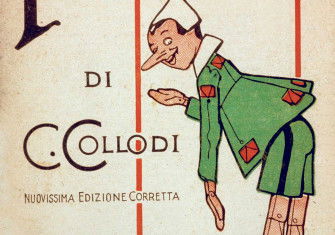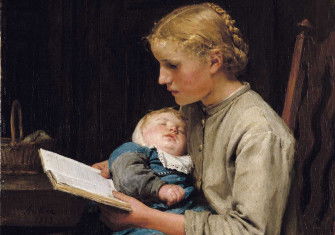An Epidemic of Shame
In a time of crisis, empathy is the antidote to a culture of naming and shaming.

The global pandemic has sent journalists reaching for their history books: how have epidemics shaped history? What can the influenza of 1918-20 teach us? In what ways did the Black Death herald a new world and build a fairer society? But Covid-19 is producing another skein of behaviour that is also unravelling before our eyes. Where it might lead us is less pleasant and more important.
On 13 April 2020, the Guardian reporter (and the prime minister’s sister-in-law) Amelia Gentleman posted a picture on Twitter asking for responses. It was a sign, printed in capitals on two sheets of A4 paper, posted in the window of a London flat. I have erased the name it gave and replaced them with XXX, but otherwise it read: ‘My neighbour XXX 1 C directly above / she keeps on having a friend round / No soical [sic] distancing / No protecting the NHS / We asked her to stop she will not / Shame on you / XXX / You are a disgrace / Shame on you / Shame on you.’ A separate sign showed arrows pointing to the flat above. The heart of the message – repeated three times – was condemnation. ‘Shame on you.’
Anthropologists distinguish between shame and guilt. Guilt is about how what we do fails to measure up to community expectations. Shame is about how we ourselves fail to measure up: ‘You are a disgrace.’ Guilt is easier to shrug off because you can apologise for what you’ve done; it’s harder to apologise for who you are. Shame gnaws at self-esteem until it leaves only traces of flesh on the bone.
The Protestants of 16th-century France knew a thing or two about shame. Each Protestant church established a consistory, made up of ministers, elders and deacons, who took it upon themselves to act as a moral tribunal. The elders were assigned streets to oversee and were charged with reporting back any visible immorality. They did not act alone. The church encouraged a culture of voyeurism, rumour and malice. Neighbours were enjoined to report on each other’s misdemeanours – the unmarried couple alone together, the wife visited by a man while her husband was away, the single maidservant whose belly seemed to be growing. Nosiness was rewarded and people rushed to police one another. Those who stepped outside the consistory’s moral boundaries had reason to fear being shamed.
Once a moral transgression came to the consistory’s attention, it was doggedly pursued and ultimately punished by shameful, visual demonstrations of humility and remorse. The most minor offences were punished through private admonition; the next step up was repentance before the consistory, then repentance and reparation before the whole congregation of the church, followed by temporary suspension from the Eucharist, or, for those who proved irredeemable, permanent excommunication. Historians used to say that, by comparison with the corporal and capital punishments used by contemporary criminal authorities, these consistorial punishments were light and essentially toothless. This is a monumental misunderstanding. The shame of confessing one’s sins before the gathered church was so deeply dishonouring that it was considered worse than a whipping. When butcher Jehan Mingaud confessed his adultery with Suzanne Bertrande to the consistory in Nîmes in 1589 and was told that he must publicly repent for his adultery before the whole church the following Sunday, he protested that the consistory was being ‘too severe with him’ and that he would ‘prefer to suffer death immediately than make the said public reparation’. It may be that we shouldn’t take what Mingaud said at face value, but Benjamin Rush, one of America’s founding fathers, expressed an uncannily similar sentiment in 1787 when he wrote that shaming ‘is universally acknowledged to be a worse punishment than death’.
It is no wonder that secular justice also punished fornicators by making them perform the amande honorable – the public apology made by an offender in a church dressed in only a shift, on his or (usually) her knees, holding a torch in one hand. You might have once put your head and legs into some replica stocks and made a funny face for the camera, but the horror of being shamed was no laughing matter.
Shame culture feels primitive and premodern, but the sign below the flat reminds us that it is pervasive, lingering under the cultural surface, waiting to be mobilised. Dr Brené Brown diagnoses shame as ‘an epidemic in our culture’ and she prescribes the antidote: empathy.
Empathy is what history is all about: this is what we should, at this historic time, learn from the past.
Suzannah Lipscomb is Professor of History at the University of Roehampton and author of The Voices of Nîmes: Women, Sex and Marriage in Early Modern Languedoc (Oxford, 2019).






